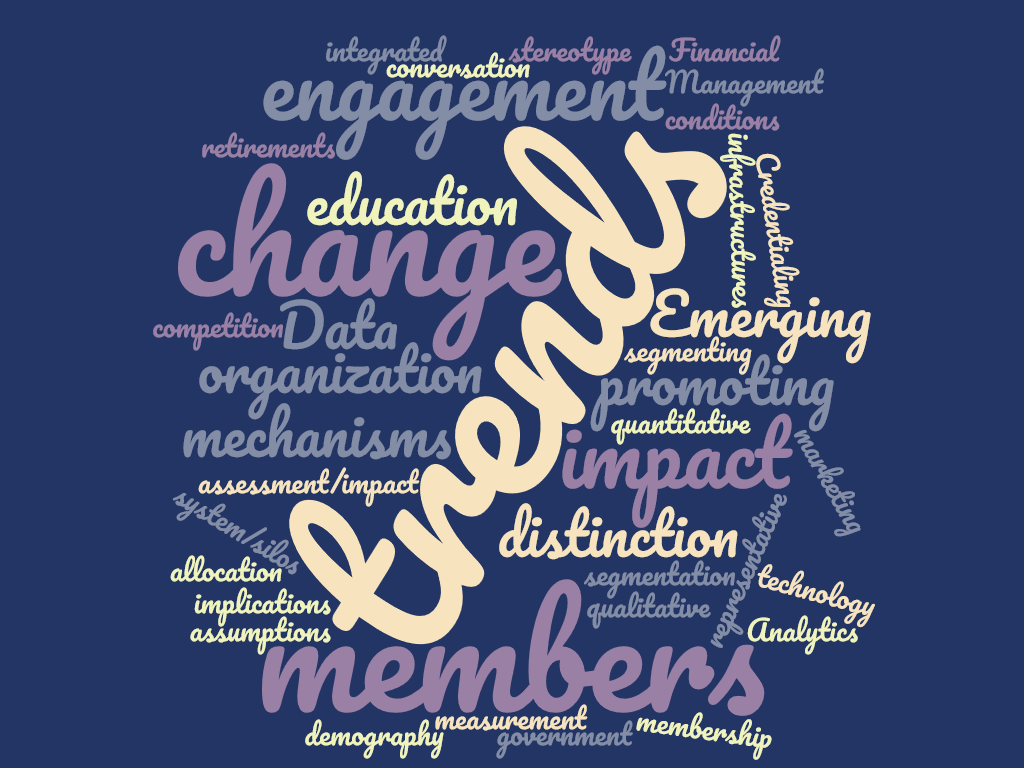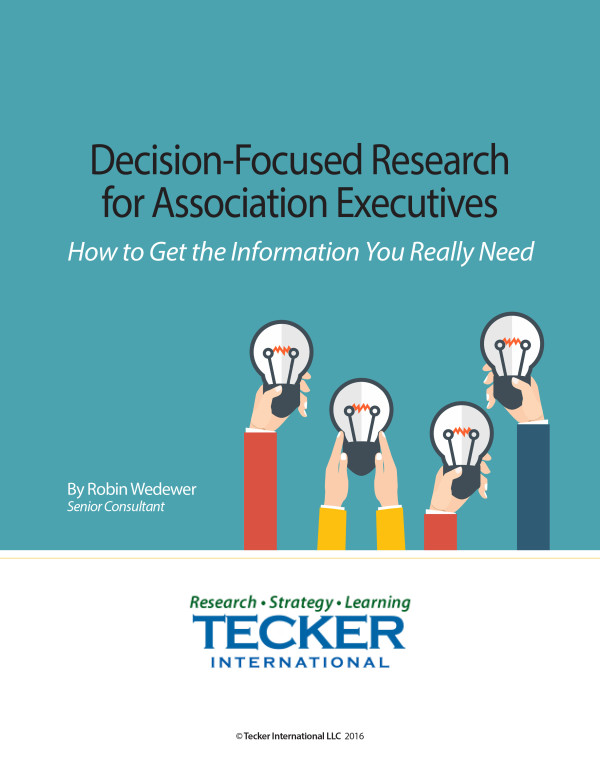One of the things that we benefit from as consultants working with multiple and diverse clients is the ability to identify association trends. We identify trends as a change in progress and the direction of that change.
Every now and then, we sit down and identify the trends we are seeing across associations. We want to share what we see. Are you seeing the same thing? This is the third part of a three part series that will identify structural trends, process trends and what we see as emerging trends.
Across the board, the most significant trends impacting associations are occurring at the confluence of shifting demography and evolving technology.
Part III: Emerging Trends
Emerging Trend: a change being observed but too soon to ascertain scope of impact or lasting effect.
Health of Associations
- Mixed signals, reports of some troubled associations but more associations than ever before and greater membership; the entire association community is growing significantly (not all individual associations)
- Credentialing as a way of creating a market demand in response to rapidly changing education and skill needs
- Increased gap between big well-funded associations that have well mediated PR firms, trying to promote the value of “oil” or “farming” – but being perceived by members as really just promoting themselves
- Seemed to have bounced back from a recession but still in that mindset/even though attendance at conferences is back up
- What’s going on in the industry has a huge impact on the association. How do we keep up with the constant pace of change? And rapid emerging issues
- Creating a tool for ongoing trends assessment/impact/foresight and monitoring on a regular basis: what are the issues and how does it impact the association and our members?
- Data analytics and AI – help us to be more predictive
- Increasing frequency of CEO retirements
Engagement strategy
- Lack of engagement and feeling it’s not enough
- Increased measurement of engagement; more mechanisms for tracking
- More debate re: get more out of those who are engaged vs. get new members – redefining & segmenting engagement
- Increased attention to deciding what is now and what will be the challenges
Research strategy
- More distinction between market and marketing research
- Increased respect for distinction between segmentation and stereotype
- More direct conversation with members vs. depending on representative groups
- More short open ended inquiry of targeted groups vs. long multiple choice questions of many
- Better quantitative vs qualitative decisions
Advocacy strategy
- More associations recognize it is not just government relations, it’s promoting who you are
- Reshaping of advocacy infrastructures built under past conditions, tools, and assumptions
- More adapting Issues Management By Objective
- More intentional thought to “what are the biggest things to think about the key drivers of change, & the implications for members and the organization
Technology strategy
- More associations trying to overcome current system/silos and to think about organization in a more flexible but integrated fashion
- Moving to the cloud
- Big Data Analytics
- Disconnect – no IT staff/no IT staff at the senior level to connect; or if it’s a small staff, they have no education about IT
Financial strategy
- Increased search for revenue
- More seeking to identify potential new products
- Increased external competition
- Increased analysis of need before launch
- New mechanisms for tying resource allocation to strategy


